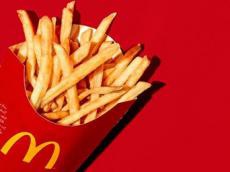Today.Az » Weird / Interesting » What exactly is in McDonald’s French fries?
23 July 2014 [14:09] - Today.Az
 POTATOES
POTATOES
Mickey D’s uses varieties like the Russet Burbank, which have a nice oval shape and just the right balance of starch and sugar. Excess sugar can cause a fry to have brown spots where it’s over-caramelized, leaving a burnt taste and deviating from the uniform yellow-arches color. Just in case, the spuds are blanched after slicing, removing surplus sugar.
SODIUM ACID PYROPHOSPHATE
Taters can turn a nasty hue even after they’re fried—iron in the spud reacts with the potato’s phenolic compounds, discoloring the tissue. The phosphate ions in SAPP trap the iron ions, stalling the reaction and keeping the potatoes nice and white throughout the process.
VEGETABLE OIL
In the good old days, McDonald’s fries were cooked in beef tallow. But customer demand for less saturated fat prompted a switch to vegetable oil in the early ’90s. Here, that means oils of varying saturations combined into something reminiscent of beef tallow. There’s canola (about 8 percent saturated fat), soybean oil (16 percent), and hydrogenated soybean oil (94 percent). And to replace the essence of beef tallow? “Natural beef flavor,” which contains hydrolyzed wheat and milk proteins that could be a source of meaty-tasting amino acids.
MORE VEGETABLE OIL
That’s right, the fries get two batches of vegetable oil—one for par-frying at the factory and another for the frying bath on location. The second one adds corn oil and an additive called TBHQ, or tertbutylhydroquinone, which at high doses can cause nasty side effects in rats (mmmm … stomach tumors). McDonald’s uses this oil for all its frying, so the stuff usually sits around in big vats, which means it can go rancid as oxygen plucks hydrogens from lipids. TBHQ acts as an antioxidant, replacing those pilfered hydrogens with its own supply.
DEXTROSE
A brief dip in a corn-based sugar solution replaces just enough of the natural sweet stuff that was removed by blanching. The result is a homogeneous outer layer that caramelizes evenly. You’ll add more sugar later when you squirt on the ketchup.
SALT
Sprinkled on just after frying, the crystals are a uniform diameter—just big enough to get absorbed quickly by crackling-hot oil. Now add ketchup and you’ve achieved the hedonistic trifecta: fat, salt, and sugar.
/CNN/
|
|